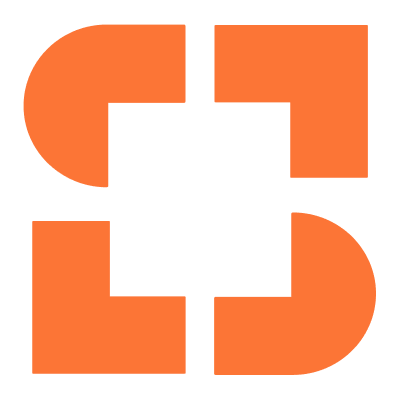You’ve decided it’s time to adopt remote online notarization (RON) as part of your digital mortgage closing strategy. Before you research technology solutions and schedule demos, it’s important to understand exactly how your business and workflows will be affected by the introduction of RON. It’s going to require lenders to do a little homework, but the information you find out and what you do with it are key to ensuring successful adoption.
Keep these six considerations in mind as you start your journey to RON eClosings.
1. Interstate recognition and county validity
Since traditionally notarized documents are recognized as valid across state lines, you might expect the same to be true of eNotarizations. Unfortunately, there are gray areas that lenders must be aware of.
Currently, there isn’t a federal law that enables the valid use of remote online notarization nationwide. Each state must enact legislation that authorizes its use by notaries who are appointed by that particular state. Even if a state doesn’t allow its commissioned notaries to perform RON, it may still accept documents remotely notarized by out-of-state signing agents.
(*Snapdocs Update: The U.S. House of Representatives passed a bill in July 2022 creating federal minimum standards, which would allow notaries nationwide to perform remote online notarizations. The legislation passed the House with a vote of 336-90.
The enactment of the national RON standards embodied in the now-approved House legislation, dubbed the SECURE Notarization Act of 2021 (SECURE stands for Securing and Enabling Commerce Using Remote and Electronic), would move the country and housing industry one step closer to a future in which E-mortgage is a reality. HousingWire covered the news here.)
See which states have adopted remote online notarization and their current status here.
At a more local level, some counties are set up to eRecord digital documents. Although a county may accept electronic records, it may not accept those that were remotely executed by an out-of-state notary.
Find the Property Records Industry Association’s list of counties that support eRecording here.
To avoid invalid documents, it’s critical to first review each state’s legislation and county recorder’s acceptance guidelines.
2. How many loans are eligible for remote online notarization
Given the varying levels of stakeholder acceptance, not all loans will be eligible for RON. This will change over time as legislation is enacted and more parties become comfortable with remote closings, so lenders should be ready for it.
At the start of your journey to RON, identify what percentage of your loan volume can actually be completed with RON based on state, county, investor, and underwriter acceptance. This is an important step in determining whether now is the right time for you to implement remote notary closings. For example, if you discover that only a small portion of your total loan volume is RON-eligible, it may not be worth the effort to pursue RON until more of your loans become eligible. If that ends up being the case, check in with stakeholders over time to see if their acceptance guidelines have changed.
3. The most successful and efficient path to remote online notarization
There are multiple paths to get from where you are now to a full eClosing with RON, which are sometimes referred to as webcam closings. You’ll need to determine which approach makes the most sense for your business. Let’s explore what the common options are.
From paper to eClosings
Lenders who are currently doing traditional paper closings may think, “Let’s just pull off the bandage and go completely digital all at once.” While it’s certainly possible, the huge amount of work that’s required makes this the least efficient approach. Not only do you have to implement eSigning, eNotes, and eNotarization, but you also need to work with investors, warehouse partners, settlement partners, and internal stakeholders to make sure everyone is aligned and ready to accept eClosings.
This is a lot of work to do all at once. Also, even though there’s a lot of excitement around eClosings and RON, the reality is that lenders aren’t able to do large volumes of eClosings today. This is because of the inconsistent acceptance and adoption among all parties involved in the closing process.
Lenders who take this approach end up only closing a small portion of their loans as eClosings, which provides little or no ROI.
From paper to hybrid to eClosings
The most successful path to eClosings actually starts with laying a foundation of hybrid closings and building toward full eClosings with RON. With hybrid closings, some of the loan package is signed or notarized in ink, while the rest is electronically completed. The promissory note can either be signed on paper or digitized and electronically signed as an eNote.
Lenders can close 70% or more of their loan volume as hybrids today. This is because eSigning is accepted in all 50 states. Also, eSigned documents are accepted by many investors, including Fannie Mae, Freddie Mac, Ginnie Mae, and the Federal Home Loan Banks.
By starting with hybrid closings, lenders are able to quickly realize the value of digital closings. They can consistently provide borrowers with an enjoyable closing experience, and they’re able to close more loans faster.
With a foundation of hybrid closings in place, it’s not a huge lift to introduce RON into your closing process. As acceptance for RON increases, you can easily add on RON to get additional value and offer fully digital and remote mortgage closings.
From paper to hybrid closings with RON and a paper note
After implementing hybrid closings that include eSigning non-notarized documents, the natural next step before RON is to offer hybrid closings that include eNotes. For lenders who want to offer webcam closings quickly though, you can technically do RON closings without implementing eNotes.
However, this should be viewed as a short-term solution, since it creates a disjointed borrower experience where everything has been digitized except the note. This approach generates more work for your borrowers, as well as for your business.
4. Whether your settlement partners are ready for remote online notarization
The earlier you consult your settlement partners, the more successful your rollout will be.
First, find out if your settlement partners are already using RON. If they are, that’ll make it easier for you since they’ll already be familiar with the process. If not, you’ll need to closely collaborate to discuss workflow changes and make sure their business and employees are prepared to launch together with yours.
Another consideration is whether to use RON-certified signing agents provided by your settlement partners or the notaries offered through your RON technology provider, if available. Ask your settlement partners whether they have access to RON-certified notaries or if they will need time for training and certification. Some settlement agents may even choose to get certified themselves. Not every RON provider offers trained and certified notaries, so this may not end up being an option for you.
5. What to do when the remote notary closing can’t be completed
There are multiple points where problems can arise in a RON closing. Some, like login and browser compatibility issues, can be easily overcome. Others can prevent the closing from happening. Either way, lenders need to have a backup plan.
One of the most common problems that can halt the closing is when the borrower isn’t able to correctly answer a series of knowledge-based authentication (KBA) questions. To prevent fraud, RON technology requires borrowers to complete a multi-factor authentication process, which typically includes validating a form of ID and successfully answering KBA questions.
The KBA multiple-choice questions are randomly generated by information retrieved from the borrower’s credit report. The borrower must correctly answer at least four out of five questions within two minutes in order to proceed with the closing.
Lenders must have a plan for borrowers who are unable to pass KBA. Some RON solutions may allow the borrower to retry after a few hours or 24 hours. However, if the borrower is still unable to pass KBA after multiple attempts, lenders need a fallback plan. It could be sending a mobile notary or having the borrower meet with the settlement agent to do the rest of the closing in-person.
6. Which remote online notarization technology is right for you
There are two types of technology that enable lenders to offer remote online notarization: a standalone RON tool and a comprehensive digital closing solution that includes RON.
Standalone RON technologies aren’t created with the entire closing process in mind. They only provide capabilities for RON, which is just one of many components you’ll need for digital closings. You’ll also need to make sure that the RON technology integrates with your existing tech stack and any other technology that’s being used for digital closings. Ultimately, a standalone solution is one more tool that you’ll need to independently manage and weave into your workflows. This creates clunky and complex processes that add more work to your operations.
A comprehensive digital closing platform that includes RON is a more streamlined solution, since it will support all aspects of a digital mortgage closing. This includes eSigning, eNotes, and RON. By plugging into a comprehensive digital closing solution, lenders don’t have to negotiate contracts with various vendors and manage multiple standalone tools. You’ll also benefit from having a standardized process of closing all loans, regardless of whether it’s a wet closing, hybrid closing, or eClosing.
The path to RON is complex and filled with nuances. What’s important is that you understand how RON fits into the digital closing ecosystem and who you need to work with to make RON a successful addition to your closings. Our free Remote Online Notarization 101: What you need to know about the technology enabling remote digital mortgage closings eBook will guide you through the implementation process and provide more details around your dependencies on key stakeholders. It also covers topics like how remote online notarization works in an eClosing, its key benefits, and some of the adoption challenges you need to be aware of.






